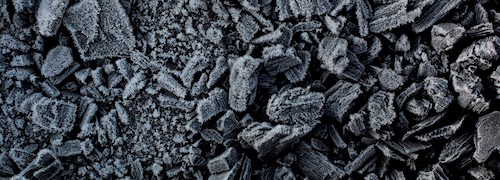Researchers working on turning coal into carbon fiber
A derivative of coal called “pitch" could be used to produce carbon fiber utilized in items from skis to automobile and aircraft parts.
The decline of the coal industry was discussed quite a bit during the presidential election, mainly centering around a loss of jobs. Well, engineers from the University of Utah believe their research may help revive the coal industry by a derivative of coal called “pitch,” which can be used to produce a carbon fiber utilized in items from skis to automobile and aircraft parts.
They are launching a $1.6 million project to research cost-effective, carbon-friendly methods of turning coal-derived pitch into carbon fiber, as well as analyze its market potential and whether it can help revitalize coal communities threatened by a decline in production, according to a news release from the university.
At a press conference at the University of Utah’s Industrial Combustion and Gasification Research Facility in downtown Salt Lake City, Jay Williams, U.S. Assistant Secretary of Commerce for Economic Development, announced the project would receive a $790,000 EDA POWER grant. It is one of a new slate of POWER grants announced by Williams that will finance projects to help struggling coal communities around the country. Matching funds for the Utah project also will come from industry-related agencies and companies.
“There’s an abundance of coal and we would like to find an alternative use for it. It is a huge natural resource in the U.S., and we have a whole coal-mining community that is desperate for a new direction,” says University of Utah chemical engineering professor Eric Eddings, who leads the research team. “If we can find an economical way to use coal to produce carbon fibers and have enough useful products so there can be a market for it, then they have that new direction. And it’s more carbon-friendly than just burning coal in a power plant.”
Typically, when coal is heated it produces hydrocarbon materials that are burned as fuel in the presence of oxygen. But if it is heated in the absence of oxygen—as in the cooking process smelters use to produce iron—those hydrocarbons can be captured, modified and turned into an asphalt-like material known as pitch.
The pitch can then be spun into carbon fiber used to produce a composite material that is strong and light. While burning coal for power generation produces carbon dioxide (CO2) that is released into the atmosphere, processing coal for carbon fiber produces “substantially” less CO2, Eddings says.
“We’re taking the carbon and turning it into carbon fiber, so that’s effectively isolating it from going into the environment,” he says.
Researchers will produce different variants of pitch and then deliver them to Matthew Weisenberger and his team at the University of Kentucky’s Center for Applied Energy Research, who are subcontractors in the project and experts at spinning pitch into carbon fiber. Engineers will research the best ways of producing pitch with as little CO2 as possible.
The research team is also working with the Utah Advanced Materials and Manufacturing Initiative (UAMMI), a consortium of materials companies, research institutions and state agencies, to examine the market potential for producing this composite material from Utah coal, and if other coal communities can benefit from this technology.
“I’m confident the research team can take Utah coal and produce carbon fiber,” Greg Jones, founding director of UAMMI says. “The question is can Utah coal have some innate benefit that lends itself to carbon fiber that is somehow better than other coals? Can we find a way to produce carbon fibers more economically so it can be competitive and the market can grow?”

Read Next
Composites end markets: Energy (2024)
Composites are used widely in oil/gas, wind and other renewable energy applications. Despite market challenges, growth potential and innovation for composites continue.
Read MoreCW’s 2024 Top Shops survey offers new approach to benchmarking
Respondents that complete the survey by April 30, 2024, have the chance to be recognized as an honoree.
Read MoreFrom the CW Archives: The tale of the thermoplastic cryotank
In 2006, guest columnist Bob Hartunian related the story of his efforts two decades prior, while at McDonnell Douglas, to develop a thermoplastic composite crytank for hydrogen storage. He learned a lot of lessons.
Read More















.jpg;maxWidth=300;quality=90)




